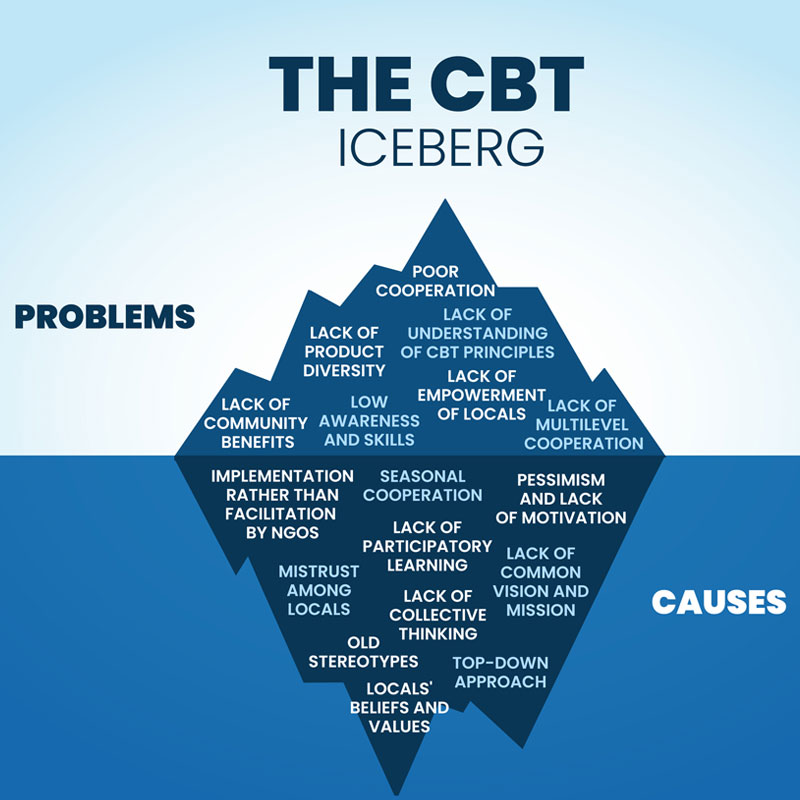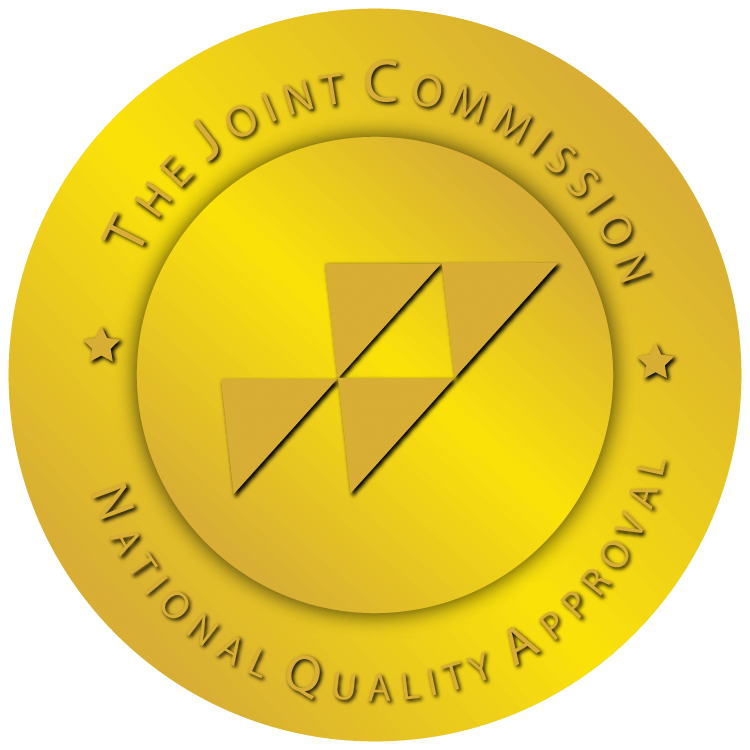
Cognitive behavioral therapy (CBT) is one of the most effective treatments for alcohol use disorder (AUD) and other substance use disorders (SUDs). In fact, it is the preferred approach among addiction specialists over other types of psychotherapy and therapeutic treatments. Learn more about CBT and why it is such a celebrated option for treating SUD.
What Is CBT?
CBT is a therapeutic approach that combines aspects of both cognitive and behavioral techniques. Its primary goal is to teach people experiencing a range of mental health conditions, like depression, anxiety, PTSD, and SUD, to recognize the emotions they are experiencing and change the thoughts and behaviors that led to them.
For example, CBT teaches people suffering from SUD techniques to recognize the emotions that preempt behaviors like drinking excessively. Participants can then replace the damaging thought and behavior with positive thoughts and constructive behavior instead. CBT is a problem-focused approach to therapy in that it helps people identify problems and find healthy solutions rather than resorting to alcohol.
Using CBT for alcohol use disorder and other substance use disorders emphasizes what is happening in the person’s life rather than what led to those problems. In this sense, it teaches individuals to be their own therapist by identifying the issue and adjusting their response. Via exercises practiced while in therapy and at home, people can hone their coping skills and utilize strategic methods to change the way they think, react, and behave at the onset of problematic situations and emotions.
Understanding the CBT Model
Cognition is the mental act or process of taking in knowledge and information and understanding it through thought and experience by way of the senses. Thus, it is easy to see that every person’s cognitive processes differ because no two people can have the same exact thoughts, experiences, and perceptions. In addition, environment and genetics can contribute to cognition.
Often, cognitive and mental disorders contribute to substance use disorders, so there is a need to retrain cognition while treating SUD. To do so, CBT takes a person’s problematic behavior and examines it in relation to the three major levels of cognition. Learn more about each of these cognitive levels.
Core Beliefs
Core beliefs, or schemas, are the underlying attitudes and perspectives a person believes about themself and the world and people around them. These beliefs are usually formed and/or influenced in early childhood, as experiences are perceived as factual and absolute. When negative core beliefs are triggered, it often results in automatic thoughts and cognitive distortions.
Cognitive Distortions
Cognitive distortions, or dysfunctional beliefs, are the irrational misconceptions people maintain. These assumptions are typically flawed and arbitrary. Many are “all or nothing” thoughts, such as someone failing one test and then deeming themself a complete failure.
Types of cognitive distortions:
- Dichotomous or “black and white” thinking, when a person believes there are no shades of gray
- Overgeneralization, when a person believes one experience dictates all similar experiences thereafter
- Selective abstraction, when a person only focuses on negative aspects and ignores everything else
- Disqualifying the positive, when a person discounts any positive experiences that contradict their negative belief system
- Mindreading, when a person assumes the intentions and thoughts of others, usually in a negative way
- Catastrophizing, when a person focuses on the worst-case scenario or exaggerates an uncomfortable situation until it seems impossible
- Emotional reasoning, when a person makes assertions and decisions based on feelings rather than objective circumstances
- “Should” statements, when a person focuses on how things should be rather than how they are
- Personalization, blame, or attribution, when a person assumes they are directly and completely responsible for a negative outcome.

Automatic Thoughts
Automatic thoughts, or negative automatic thoughts (NATs), are subconsciously triggered by certain situations and often intensify problematic behavior. NATs are especially significant to people with SUD because this is typically when they engage in substance use. When a situation triggers NATs, the brain copes with the situation as it knows best, even if it’s with negative behavior.
Cognitive Behavioral Therapy for Alcohol Addiction and SUD
Studies based on the relationship between these three levels of cognitive behavior show that problematic behavior can, in fact, be changed or replaced with positive behavior. These behaviors are modified via cognitive restructuring. To put it simply, by redirecting unhealthy thought patterns, the related damaging behavior can also be retrained. However, it is important to understand that CBT requires a patient who is willing to change. Only then can they productively engage in CBT and seek the desired change.
CBT is useful in treating AUD and other SUDs because it modifies the brain’s patterns to resolve uncomfortable and triggering situations with a solution other than substance use. To replace the negative behavior with a positive one, the situation or emotion causing the behavior must first be identified in therapy sessions. Once the trigger is pinpointed, the person must then learn to recognize the trigger and act to divert the negative thought patterns to positive ones. Eventually, the positive behavioral response becomes automatic.
What to Expect in CBT Therapy
A therapist initiating CBT for alcohol use disorder or a substance use disorder will start by helping you categorize your problems into basic groups such as thoughts, situations, actions, physical feelings, and emotions. By analyzing the relationships between these categories, you and the therapist can discern how experiences influence emotions and behaviors.
Then, by identifying unhealthy patterns of thoughts and feelings that are associated with problematic behaviors, you can deconstruct and rebuild your reaction to the underlying problem. The goal is to reconstruct those thoughts and feelings so they result in healthy behavior patterns, eventually replacing the former negative patterns altogether. This is based on the belief that if human behavior can be learned, it can be unlearned and relearned, as well.
CBT therapy can take from five to 20-30 sessions carried out over a period of up to 20 weeks. In some cases, more sessions are necessary. The first few sessions are about identifying the negative thought and behavior patterns and finding the relationships between them. The time this initial phase takes, and the realizations that come out of it will contribute to the number of subsequent sessions needed. Essentially, the more treatment, the better. Consequently, the more sessions participants receive over time, the better the chances of long-term sobriety and effective treatment will be.
CBT Is an Evidence-Based Therapy
Unlike many other popular therapies for treating substance and alcohol use disorders, there has been significant research conducted regarding CBT as an approach to modifying behavioral patterns. More than 400 clinical trials have been carried out across a broad field of populations and conditions. The common thread across most CBT studies is positive results and promising research.
Since CBT is an evidence-based practice, it is commonly used in SUD treatment. In addition, most mental health care professionals are trained in CBT. Psychologists, counselors, and therapists can all provide CBT, so it is widely available across multiple treatment settings.
Why Is CBT So Effective?
Once trained during therapy sessions, people can continue to practice CBT on their own; in fact, this is necessary for the treatment to work long-term. CBT is self-driven in that its goal is to teach the person to identify a problem and then resolve it in a healthy way. CBT requires practice and repeated implementation, and only through this practice can it become an effective way for people to stay in recovery.
CBT is also effective because it takes the focus off past experiences, which often begin the cycle of substance use. The present-focused perspective of CBT trains people to concentrate on current problems and teaches them to fix those problems through progressive actions. It also teaches participants to set realistic goals by focusing on real-time problems via structured focus and the completion of positive behaviors. In this regard, CBT is also a problem-centered therapy.
Finally, CBT is collaborative and encourages people not to tackle a problem alone. Working together with a qualified therapist will set the stage for every participant to maintain confidence and strength as an individual. This confidence can improve the chances of long-term sobriety once therapy ends.
Dual Diagnosis and CBT
Mental health disorders like depression and anxiety are believed to play a part in a significant percentage of substance use disorder cases. Patients who have a dual diagnosis (diagnosed with two disorders) are likely to see improvement in both areas with CBT. Because substance use disorder diagnoses often go hand in hand with other diagnoses, CBT enables people to treat both conditions.
In fact, CBT has been proven effective and is commonly used for treating several psychological problems in addition to SUD. These include but are not limited to the following:
- Anxiety disorders, including obsessive-compulsive disorder (OCD), social phobia, and post-traumatic stress disorder (PTSD)
- General anxiety disorder (GAD)
- Depression
- Irrational fears
- Low self-esteem
- Hypochondria
- Problem gambling
- Eating disorders
- Insomnia
- Relationship problems, including marital issues
- Some emotional and/or behavioral problems in teens and children
- Substance use disorder (SUD), including alcohol use disorder, opioid use disorder, and more
Methods Associated with CBT

CBT can be applied in both individualized therapy sessions as well as small group sessions. Many patients respond well when learning to apply CBT practices to everyday life via group exercises. In addition, there are several different methods for treating SUD with CBT. Some of them include contingency management, journaling, exposure therapy, motivational intervention, role-playing, relaxation, stress elimination, self-care, and relapse prevention. All of these can be useful components of an SUD treatment plan.
During CBT, the therapist will implement one or more of these methods when identifying irrational and destructive patterns contributing to substance use. Together with the therapist, the individual will develop and practice strategies to modify negative patterns. Finally, they will develop a plan to resolve problems with positive behaviors.
CBT is Considered the Gold Standard of Psychotherapy
CBT produces results because it works to improve behavioral cognition from many angles, improving the overall quality of life for an individual. SUD is a deep-rooted disease, and by going through the steps to uncover what leads to unwanted behavior, people can develop coping skills, critical thinking skills, and communication skills. Other benefits of CBT include improvements in addressing and avoiding fears, building confidence in one’s own abilities, and preventing relapse.
Many people with a substance abuse disorder use the substance of choice to cope with emotions rooted in cognitive distortions. When presented with other disorders like anxiety or depression, SUD can exacerbate other symptoms. When people receive CBT, whether as a standalone treatment or together with other therapies, they work with a therapist to complete these four stages.
- In treatment, the positive and negative consequences of continued alcohol use are discussed and acknowledged.
- The person will keep a written record of instances when cravings arise, recognizing what situations, events, people, and circumstances triggered the craving and led to compulsive behavior.
- Together, the individual and the therapist will develop a plan to manage cravings in the future and avoid the situations and conditions that trigger them.
- Self-control, self-confidence, and self-worth improve with time and continued practice of CBT. The skills learned from therapy are usually maintained long after treatment.
CBT’s effectiveness increases when treatment programs incorporate other approaches, such as support groups, Alcoholics Anonymous, holistic programs, and medication-assisted treatment (MAT). Used in this way, CBT is the number one psychotherapy choice for SUD treatment, decreasing the likelihood of relapse and reducing the overall relapse rate. For this reason, many programs continue to use CBT as a tool in alumni or relapse prevention programs.
What to Expect from Your CBT Counselors or Therapists
There are certain characteristics and personality traits a CBT counselor or therapist should possess that will increase the success of your cognitive behavioral therapy sessions. Counselors should be empathetic, honest, and sensitive, as well as supportive and encouraging to establish a strong partnership. This alliance between you and your therapist is essential in establishing a productive rapport that helps your CBT work.
Because counselors are put in a coaching role in CBT, it is important that they set an example of a positive attitude, moral values, and behavior modeling. While many therapists are trained in CBT, not all are right for the job. That’s why it is so important to seek treatment from a reputable source with proven success in CBT programs, as well as other areas of treatment.
Learn More About Our Treatment Programs

Whether you are looking for help for yourself or for a loved one, Maryland Recovery is ready to provide support every step of the way. We offer effective substance use disorder treatment programs that include cognitive behavioral therapy alongside other proven therapies. Our well-trained professionals are experienced in CBT and feel strongly about forming a partnership with you to address the factors behind your SUD.
*Editor’s Note: This article was originally published October 14, 2015 and has been updated January 24, 2022.
Sources:
- https://www.ncbi.nlm.nih.gov/pmc/articles/PMC1885208/
- https://www.ncbi.nlm.nih.gov/pmc/articles/PMC2897895/
- https://www.ncbi.nlm.nih.gov/books/NBK470241/
- https://nida.nih.gov/publications/research-reports/common-comorbidities-substance-use-disorders/part-1-connection-between-substance-use-disorders-mental-illness
Reviewed by Christopher Schwartfigure MS, LGPC, CAC-AD








